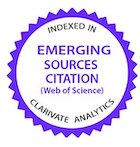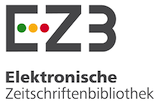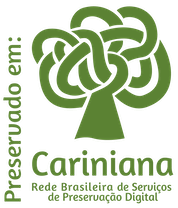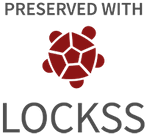Fator de crescimento e diferenciação – 9 (GDF-9) aumenta a taxa de crescimento in vitro de folículos antrais iniciais caprinos isolados
DOI:
https://doi.org/10.1590/1809-6891v24e-74980EResumo
Este estudo teve como objetivo investigar o efeito do GDF-9 durante o cultivo in vitro de folículos antrais iniciais caprinos isolados. Os folículos antrais iniciais isolados e selecionados foram cultivados individualmente por 18 dias, e os seguintes tratamentos foram testados: α MEM+ (tratamento controle) ou α-MEM+ suplementado com 200 ng/mL de GDF-9 (tratamento GDF-9). Os seguintes parâmetros foram avaliados: crescimento e morfologia folicular, produção de estradiol, maturação nuclear do oócito e expressão relativa de genes-chave relacionados a esteroidogênese (CYP19A1, CYP17 e receptor de insulina) e remodelamento da membrana basal (MMP-9 e TIMP-2). Em ambos os tratamentos, observou-se diminuição na porcentagem de folículos morfologicamente intactos com aumento concomitante nas taxas de folículos extrusos e degenerados (P < 0,05). O tratamento GDF-9 apresentou maiores taxas de folículos extrusos apenas no 6º dia de cultivo (P < 0,05). O diâmetro do folículo aumentou progressivamente ao longo do período de cultivo (P < 0,05) com diâmetros semelhantes entre os tratamentos em todos os tempos de cultivo (P > 0,05). O GDF-9 aumentou a taxa de crescimento diário do primeiro para o segundo terço de cultivo, sendo maior (P < 0,05) que o controle no segundo terço. A taxa de maturação oocitária assim como os níveis de estradiol e a expressão relativa de RNAm para os genes CYP19A1, CYP17, MMP-9, TIMP-2 e receptor de insulina foram similares entre os tratamentos (P > 0,05). Em conclusão, este estudo mostra pela primeira vez que GDF-9 adicionado a um meio de cultivo aumentou a taxa de crescimento de folículos antrais iniciais caprinos cultivados in vitro.
Palavras-chave: cultivo in vitro; folículo antral; cabra; GDF-9
Downloads
Referências
Sá NAR, Araújo VR, Correia HHV, Ferreira ACA, Guerreiro DD, Sampaio AM, et al. Anethole improves the in vitro development of isolated caprine secondary follicles. Theriogenology. 2017;1(89):226–34. https://doi.org/10.1016/j.theriogenology.2015.12.014
Sá NAR, Ferreira ACA, Sousa FGC, Duarte ABG, Paes VM, Cadenas J, et al. First pregnancy after in vitro culture of early antral follicles in goats: Positive effects of anethole on follicle development and steroidogenesis. Mol Reprod Dev. 2020;87(9):966–77. https://doi.org/10.1002/mrd.23410
Elvin JA, Clark AT, Wang P, Wolfman NM, Matzuk MM. Paracrine actions of growth differentiation factor-9 in the mammalian ovary. Mol Endocrinol. 1999;13(6):1035–48. https://doi.org/10.1210/mend.13.6.0310
Silva JRV, Van Den Hurk R, Van Tol HTA, Roelen BAJ, Figueiredo JR. Expression of growth differentiation factor 9 (GDF9), bone morphogenetic protein 15 (BMP15), and BMP receptors in the ovaries of goats. Mol Reprod Dev. 2005;70(1):11–9. https://doi.org/10.1002/mrd.20127
Hreinsson JG, Scott JE, Rasmussen C, Swahn ML, Hsueh AJW, Hovatta O. Growth differentiation factor-9 promotes the growth, development, and survival of human ovarian follicles in organ culture. J Clin Endocrinol Metab. 2002;87(1):316–21. https://doi.org/10.1210/jcem.87.1.8185
Martins FS, Celestino JJH, Saraiva MVA, Matos MHT, Bruno JB, Rocha CMC, et al. Growth and differentiation factor-9 stimulates activation of goat primordial follicles in vitro and their progression to secondary follicles. Reprod Fertil Dev. 2008;20(8):916–24. https://doi.org/10.1071/RD08108
Cook-Andersen H, Curnow KJ, Su HI, Chang RJ, Shimasaki S. Growth and differentiation factor 9 promotes oocyte growth at the primary but not the early secondary stage in three-dimensional follicle culture. J Assist Reprod Genet. 2016;33(8):1067–77. https://doi.org/10.1007/s10815-016-0719-z
Almeida AP, Saraiva MVA, Araújo VR, Magalhães DM, Duarte ABG, Frota IMA, et al. Expression of growth and differentiation factor 9 (GDF-9) and its effect on the in vitro culture of caprine preantral ovarian follicles. Small Rumin Res. 2011;100(2–3):169–76. https://doi.org/10.1016/j.smallrumres.2011.06.001
Chaves RN, Martins FS, Saraiva MVA, Celestino JJH, Lopes CAP, Correia JC, et al. Chilling ovarian fragments during transportation improves viability and growth of goat preantral follicles cultured in vitro. Reprod Fertil Dev. 2008;20(5):640–7. https://doi.org/10.1071/RD07195
Cadenas J, Leiva-Revilla J, Vieira LA, Apolloni LB, Aguiar FLN, Alves BG, et al. Caprine ovarian follicle requirements differ between preantral and early antral stages after IVC in medium supplemented with GH and VEGF alone or in combination. Theriogenology. 2017;87:321–32. https://doi.org/10.1016/j.theriogenology.2016.09.008
Cadenas J, Maside C, Ferreira ACA, Vieira LA, Leiva-Revilla J, Paes VM, et al. Relationship between follicular dynamics and oocyte maturation during in vitro culture as a non-invasive sign of caprine oocyte meiotic competence. Theriogenology. 2018;107:95–103. https://doi.org/10.1016/j.theriogenology.2017.10.038
Jiatsa Donfack N, Alves KA, Alves BG, Pedrosa Rocha RM, Bruno JB, Lobo CH, et al. Xenotransplantation of goat ovary as an alternative to analyse follicles after vitrification. Reprod Domest Anim. 2019;54(2):216–24. https://doi.org/10.1111/rda.13340
Livak KJ, Schmittgen TD. Analysis of relative gene expression data using real-time quantitative PCR and the 2-ΔΔCT method. Methods. 2001;25(4):402–8. https://doi.org/10.1006/meth.2001.1262
Ferreira ACA, Cadenas J, Sá NAR, Correia HHV, Guerreiro DD, Lobo CH, et al. In vitro culture of isolated preantral and antral follicles of goats using human recombinant FSH: Concentration-dependent and stage-specific effect. Anim Reprod Sci. 2018;196:120–9. https://doi.org/10.1016/j.anireprosci.2018.07.004
Campos LB, Silva AM, Praxedes ÉCG, Bezerra LGP, Freitas JLS, Melo LM, et al. Effect of growth differentiation factor 9 (GDF-9) on in vitro development of collared peccary preantral follicles in ovarian tissues. Anim Reprod Sci. 2021;226:106717. https://doi.org/10.1016/j.anireprosci.2021.106717
Dipaz-Berrocal DJ, Sá NAR, Guerreiro DD, Celestino JJH, Leiva-Revilla J, Alves BG, et al. Refining insulin concentrations in culture medium containing growth factors BMP15 and GDF9: An in vitro study of the effects on follicle development of goats. Anim Reprod Sci. 2017;185:118–27. https://doi.org/10.1016/j.anireprosci.2017.08.011
Chaves RN, Duarte ABG, Rodrigues GQ, Celestino JJH, Silva GM, Lopes CAP, et al. The Effects of Insulin and Follicle-Simulating Hormone (FSH) During In vitro Development of Ovarian Goat Preantral Follicles and the Relative mRNA Expression for Insulin and FSH Receptors and Cytochrome P450 Aromatase in Cultured Follicles1. Biol Reprod. 2012;87(3):1–11. https://doi.org/10.1095/biolreprod.112.099010
Ferreira ACA, Maside C, Sá NAR, Guerreiro DD, Correia HHV, Leiva-Revilla J, et al. Balance of insulin and FSH concentrations improves the in vitro development of isolated goat preantral follicles in medium containing GH. Anim Reprod Sci. 2016;165:1–10. https://doi.org/10.1016/j.anireprosci.2015.10.010
Peralta MB, Baravalle ME, Belotti EM, Stassi AF, Salvetti NR, Ortega HH, et al. Involvement of Matrix Metalloproteinases and their Inhibitors in Bovine Cystic Ovarian Disease. J Comp Pathol. 2017;156(2–3):191–201. https://doi.org/10.1016/j.jcpa.2016.10.012
Huang Q, Cheung AP, Zhang Y, Huang HF, Auersperg N, Leung PCK. Effects of growth differentiation factor 9 on cell cycle regulators and ERK42/44 in human granulosa cell proliferation. Am J Physiol Endocrinol Metab. 2009;296(6):1344-53. https://doi.org/10.1152/ajpendo.90929.2008
Farkas S, Szabó A, Hegyi AE, Török B, Fazekas CL, Ernszt D, Kovács T, Zelena D. Estradiol and Estrogen-like Alternative Therapies in Use: The Importance of the Selective and Non-Classical Actions. Biomedicines. 2022;10(4):861. https://doi.org/10.3390/biomedicines10040861
Downloads
Publicado
Como Citar
Edição
Seção
Licença
Copyright (c) 2023 Ciência Animal Brasileira / Brazilian Animal Science

Este trabalho está licenciado sob uma licença Creative Commons Attribution 4.0 International License.
Autores que publicam nesta revista concordam com os seguintes termos:
- Autores mantém os direitos autorais e concedem à revista o direito de primeira publicação, com o trabalho simultaneamente licenciado sob a Licença Creative Commons Attribution que permite o compartilhamento do trabalho com reconhecimento da autoria e publicação inicial nesta revista.
- Autores têm autorização para assumir contratos adicionais separadamente, para distribuição não-exclusiva da versão do trabalho publicada nesta revista (ex.: publicar em repositório institucional ou como capítulo de livro), com reconhecimento de autoria e publicação inicial nesta revista.
- Autores têm permissão e são estimulados a publicar e distribuir seu trabalho online (ex.: em repositórios institucionais ou na sua página pessoal) a qualquer ponto antes ou durante o processo editorial, já que isso pode gerar alterações produtivas, bem como aumentar o impacto e a citação do trabalho publicado (Veja O Efeito do Acesso Livre).






























